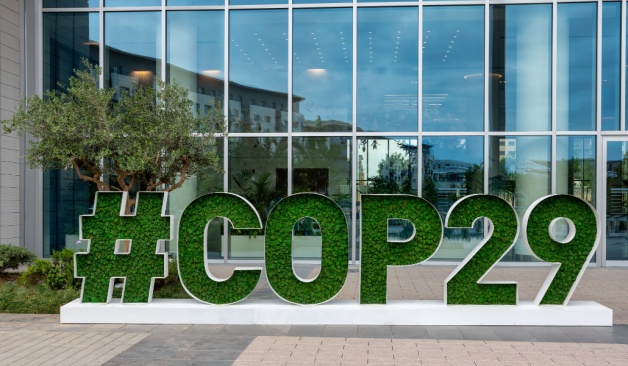
Climate Finance COP 29: India in COP 29
The 29th Conference of Parties (COP29) was recently held under the UN Framework Convention on Climate Change (UNFCCC) in Baku, Azerbaijan. It brought global attention to the critical issue of climate finance.
The summit emphasized the urgency of mobilizing significant financial resources to combat climate change effectively, especially in emerging markets and developing economies (EMDCs). Let us look at COP29 and India’s involvement in it.
What is COP?
A Conference of the Parties (COP) is the supreme decision-making body of an international convention or treaty. It comprises representatives from the member states of the convention, along with accredited observers. The primary role of a COP is to:
- Review the implementation of the Convention and any related legal instruments.
- Take necessary decisions to promote the effective implementation of the convention.
- Adopt new agreements or protocols to strengthen the convention.
Key Highlights of COP29
Here are key highlights from COP29:
1. Climate Finance Gap: COP29 aimed to establish a climate finance goal for developed nations to assist climate-vulnerable countries beyond 2025. An agreement was reached to deliver $300 billion annually by 2035, a significant increase from the current $100 billion.
However, developing nations, including India, Nigeria, Bolivia, and Cuba, pushed for a much larger $1.3 trillion annual goal. Discontent was evident as the Alliance of Small Island States (AOSIS) and Least Developed Countries (LDCs) staged a walkout in protest.
The conference adopted a "Baku to Belem" roadmap, setting milestones for progress reports in 2026 and 2027 and a review of the $1.3 trillion target by 2030. While parties acknowledged the necessity of public, grant-based, and concessional funds for poor countries, no binding commitments were made.
2. Carbon Markets Agreement: After years of deadlock, COP29 finalized an agreement on government-to-government carbon markets under Article 6 of the Paris Agreement. This framework includes:
- Article 6.2: Regulating bilateral carbon trading between countries, where emissions reductions are discounted from national climate plans.
- Article 6.4: Establishing a global crediting mechanism, allowing nations to sell emissions reductions internationally.
India plans to operationalize its carbon trading market by FY27 but faces delays in defining rules and compliance measures due to the incomplete finalization of Article 6 regulations. Concerns remain over the risk of junk carbon credits, a flaw reminiscent of the earlier Clean Development Mechanism (CDM).
3. Trade Barriers and Climate Policies: India and other developing nations argued that trade policies imposed by developed countries, such as Europe’s Carbon Border Adjustment Mechanism (CBAM), hinder their transition to low-carbon economies. Concerns were also raised over potential broad tariffs on imports by the U.S., as speculated under President-elect Donald Trump. In a positive outcome, the UN climate body agreed to include discussions on climate-related trade barriers in future summits, addressing a critical demand from developing nations.
What is India's Demand in COP 2029?
Below is an overview of India's Demand in COP29:
- Increased Climate Finance: COP29 aimed to establish a climate finance goal for developed nations to assist climate-vulnerable countries beyond 2025. An agreement was reached to deliver $300 billion annually by 2035, a significant increase from the current $100 billion.
- Technology Transfer: India stressed the need for unrestricted access to green technologies, urging developed countries to remove barriers such as Intellectual Property Rights (IPR) restrictions
- Equity and Justice: The Indian delegation reiterated the principle of Common but Differentiated Responsibilities and Respective Capabilities (CBDR-RC), demanding that developed nations take the lead in reducing emissions
Challenges and Opportunities
While India remains a vocal advocate for fairness in climate policies, challenges such as inadequate financing mechanisms and risks of “greenwashing” in carbon credit markets remain. However, with proactive strategies, including compliance with international standards, India can strengthen its role in global climate action.
COP29 highlights India’s dual focus on holding developed nations accountable for past and future commitments while ensuring equitable and sustainable pathways for developing economies. The conference serves as a critical reminder of the financial and collaborative efforts needed to address the climate crisis effectively.
Over to COP 30
The 30th United Nations Climate Change Conference (COP30) is scheduled to take place in Belém, Brazil, often referred to as the "Gateway to the Amazon." This venue is symbolic, as the Amazon rainforest plays a critical role in regulating the global climate, acting as one of the planet's largest carbon sinks.
As the COP29 discussions in Baku, Azerbaijan, extended over two nights with tense negotiations, Brazil emphasized the importance of making tangible progress on climate issues. During COP29, Brazil’s representatives expressed frustration over the slow pace of agreements, but they remained optimistic about building on these discussions when the country takes the helm at COP30 in 2025.










